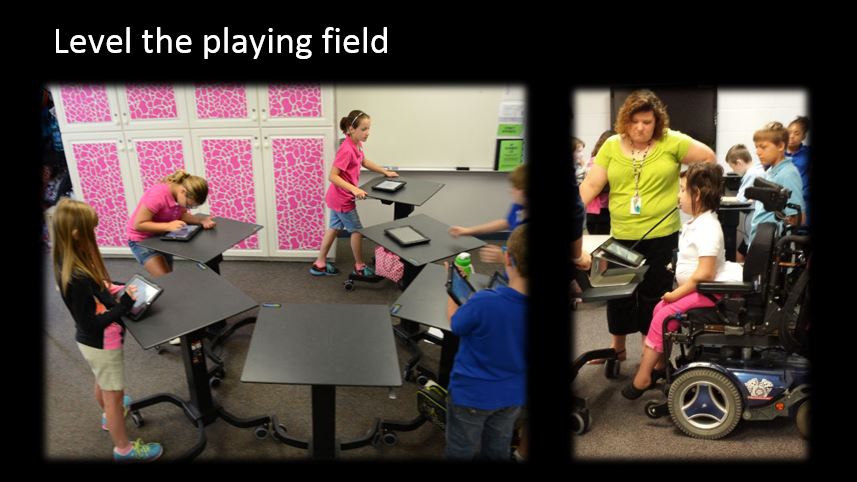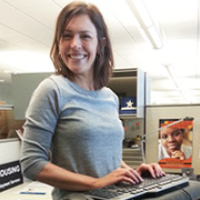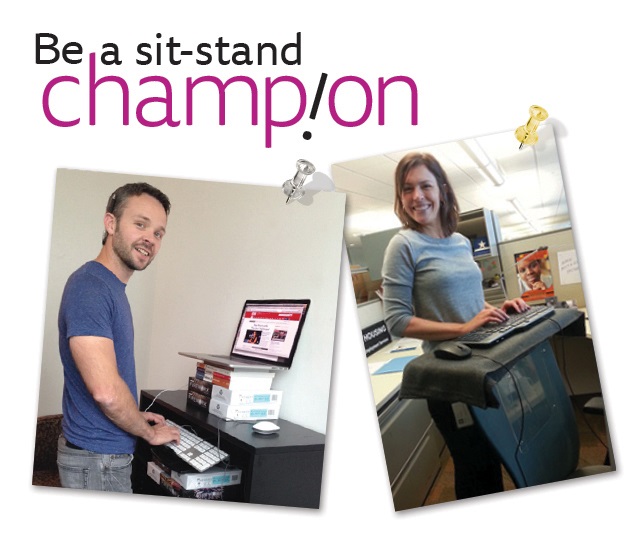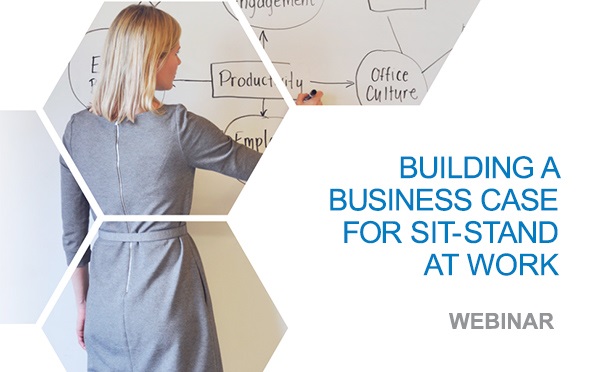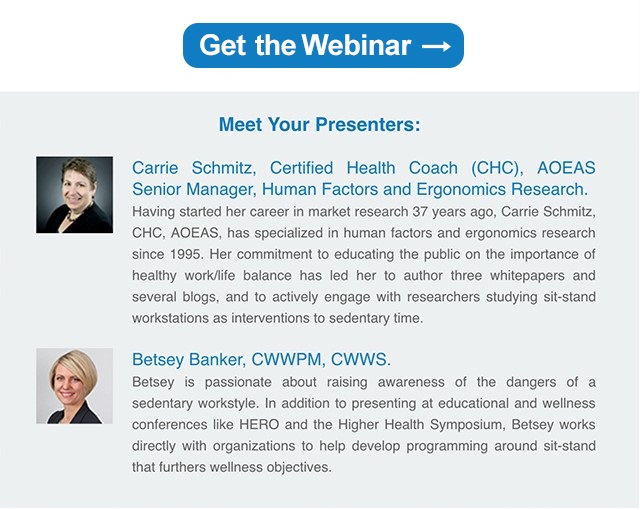
 It’s been a month since we presented our Building a Business Case for Sit-Stand at Work webinar (available on-demand). There was a lot of interest in the topic and we received several questions after the Q&A segment, so let’s address them here.
It’s been a month since we presented our Building a Business Case for Sit-Stand at Work webinar (available on-demand). There was a lot of interest in the topic and we received several questions after the Q&A segment, so let’s address them here.
Q: When did Ergotron become involved with the sit-stand workstyle concept?
A: In 1994 we introduced our first sit-stand monitor arms – back then for CRTs! But really the sit-stand concept started with healthcare. Nurses were spending too many hours on their feet, so Ergotron designed carts that would allow them to sit while charting. In 2009 we launched our first WorkFit® sit-stand desk and in 2010 we launched JustStand.org, as a hub and community for the latest research, tools and ideas about moving more. And we’re still innovating with products like the LearnFit® student standing desk for classrooms.
Q: I’d like to make a business case to my boss for a sit-stand desk. I’m not an HR professional. Where do I even start?
A: First of all, bravo! You’re not alone in being hesitant to request a workstation upgrade – only 16 percent of employees surveyed have asked for one. Begin with our “Ask Your Boss” letter template (part of a downloadable WorkFit Champion Toolkit). Then customize it based on your unique circumstances. If you have special health concerns that are exacerbated by sitting, talk to your doctor about using a sit-stand workstation. Most companies will try to accommodate an employee with a medical condition.
Or, if your boss will only be convinced by fiscal facts and figures, add an ROI angle to your letter, such as what this employee wrote to her manager:
“Outfitting our workplace with ergonomic sit-stand desks will affect the bottom line in a positive way. Let’s say every workplace injury costs the company $5,000, taking into account lost productivity, increased healthcare costs, etc. If an employee approaches you before becoming injured at the workplace from a chronic disease or repetitive strain injury, you save $5,000 (minus the cost of the desk). The return on investment is substantial. Not to mention all the other benefits: employees who sit and stand up during the workday are more comfortable and more alert, and as a result, more productive.”
Q: Do you recommend any small tools or gadgets to help me add more movement to my sit-stand routine?
A: Sure! Many of us have tried a variety of active-office gear with positive results. Your experience may vary, so listen to your body and have fun experimenting. Carrie, a certified ergonomic assessor, says her anti-fatigue mat gets a lot of use. When standing, it not only cushions her feet, but it encourages her to move. (One bonus: the cushioning in any one spot of a mat compresses and provides less padding after a while, so you naturally step to another spot.) Denise, a designer, uses a stand-up task stool with her sit-stand desk. She likes to adjust it to different heights, depending on her fatigue level, and “perch” on it throughout the day. When on a long phone call, for instance, she raises it high and rocks back and forth, which keeps her legs moving and engaged. Colette, a product manager, likes to use a footstool so she can alternate putting a leg up when standing, or a balance board when movement helps her stay more engaged and alert.

 Bob Hill,
Bob Hill,

